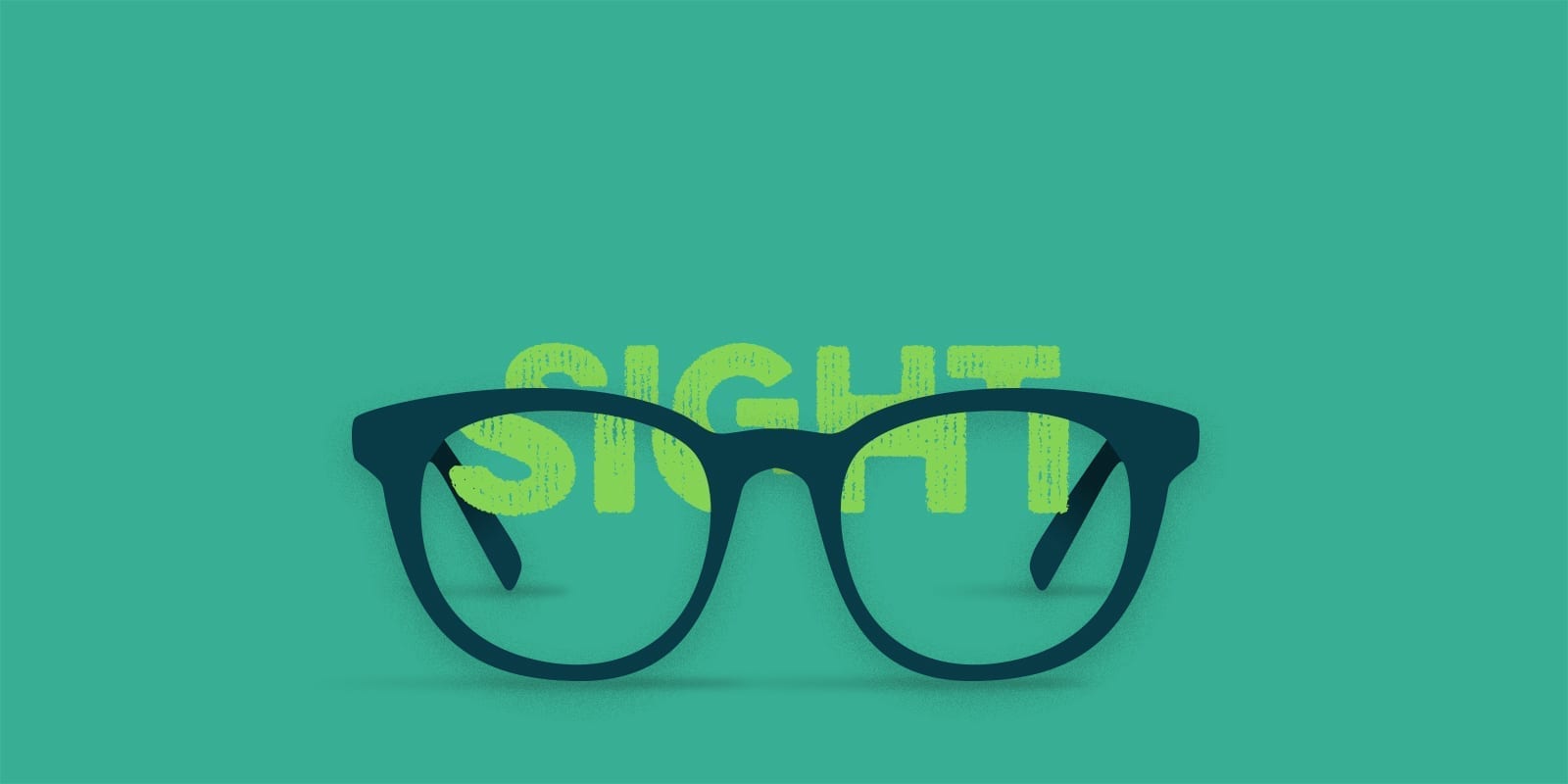Earnest Labs Explores The Five Senses: Sight

Aged ten I got my first pair of specs. The NHS classic: purple, plastic and kid-proof. No, they did not suit my face. But then again, they were not built for style. They were built to survive me accidentally sitting on them.
This was fifteen-years ago and trust me when I say I’ve had my fair share of eye tests, orange drops and questionable spectacle fashion. This poor face of mine has had to endure everything from the Harry Potter copycat to the thick rimmed squished rectangles. And currently, a pair of oversized circles that rest upon my slightly chubby cheeks.
At the age of fourteen I was invited to try contact lenses. As you can imagine, this was a revelation. No more fingerprinted lenses with smudged vision. No more basketballs knocking my specs of my noggin. No more Harry Potter. Wonderful.
And just as I was getting use to having a hydrogel dome temporarily glued to my eyes, the concept of laser eye surgery was introduced. It sounded like a dream come true.
Except, I had my reservations. The science was still relatively new and it was going to cost me the better part of £3,000.
Idea parked, I came to the conclusion that science was only going to get better. Why fix these knackered, vision-subversive eyes when one day I could get a brand new pair instead?
And so the waiting continued.
And now it seems the future has almost arrived.
“…some believe bionic and electronic eyes will eventually give us ‘superpowers’…”
Although attempts of whole-eye transplants have been plagued with issues of immune rejection, inadequate blood flow, and lack of nerve function, there are some researchers refusing to give up on this beautifully complex sense.
Second Sight is one such group. They are the masterminds behind the Argus II – a two-part retinal prosthesis system that uses a glass-mounted miniature camera, and a tiny array of electrodes implanted on the retina. Just as a camera depends on pixels to react to light, vision relies on the retina to do the same. By connecting the camera directly to the retina’s remaining cells, electrical pulses are transmitted as patterns of light to the brain, which patients then decipher as shapes.
For those suffering with vision loss due to eye injury, some scientists maintain that transplantation is the best way forward – despite the hurdles. In fact, they are confident they will see the first human eye transplant within the decade.
Others, such as Professor Arthur Lowery, believe sight is possible without the need of eyes at all. His “bionic eyes” feed information from a glasses-mounted camera directly into the brain via electrodes, bypassing the eyes altogether.
This development begs the questions, when restorative eye systems no longer need to interact with an eye, where does the science stop?
At present, the primary focus is to improve impaired vision. However, some believe bionic and electronic eyes will eventually give us ‘superpowers’ – advancing the natural ability of eyes and creating a desire to have senses not natural to us.

Although not an entirely original prophecy, humans who currently have biomechatronic body parts generally do so to rectify physical limitations. The Argus II for instance has already made humans part machine – creating cyborgs through necessity.
Yet, skepticism remains.
Although recreating our pre-existing body parts is often considered ethical, when it comes to new body parts and senses, people find these developments unscrupulous.
The thing is, human augmentation isn’t new. In fact, we’ve been augmenting ever since we picked up sticks and rocks and turned them into basic tools. The concern then seems to stem from our use of technology within augmentation and the speed at which these changes are happening, rather than augmentation itself.
One fear is that emerging augmentations beyond pre-existing body parts could create a worldwide arms race, offering humans a stark choice of evolve or perish – and not at the leisurely speed we’re used to evolving at.
But transhumanist Gennady Stolyarov disagrees. Instead, he foresees an explosion of diversity, where rather than striving for a single model of perfection, we’ll “create a future where a thousand augmented flowers will bloom.” Just as we choose what to fix first in our homes, we’ll each have different priorities and aspirations when it comes to improving our bodies.
“life will become much more exciting when we stop creating applications for our mobile phones and we start creating applications for our own body”.
Another pro-transhumanist is self-proclaimed cyborg Neil Harbisson. In 2005 he became the first person in the world with an antenna implanted in his skull – a device he refers to as an “eyeborg”. Born with a rare ocular condition that only allows him to see the world in grayscale, Harbisson’s eyeborg translates colour into sound by sending frequencies to a chip installed in the back of his head. These frequencies are picked up through bone conduction and are capable of hearing colours the human eye cannot see, such as infrared and ultraviolet.
Describing his eyeborg as “an extension of his senses”, Harbisson debunks any suggestion that cyborgism is unnatural. He believes instead that this technology is capable of bringing us closer to reality and other life forms that share similar cognitive apparatus. He goes as far as to say that “life will become much more exciting when we stop creating applications for our mobile phones and we start creating applications for our own body”.

Although I’m sure it would be more exciting – I mean Nebula was pretty cool in Guardians of the Galaxy and Darth Vader has undoubtedly been entertaining audiences since 1977 – I’m not sold on joining the cyborg clan any time soon.
Which is strange, considering getting a new pair of eyes was what exactly what I waiting for in my late teens.
Maybe I haven’t watched enough sci-fi movies to be won over – or I’ve watched the wrong ones and have put myself off. Or perhaps my eyesight hasn’t deteriorated to the point where I’m driven to advance my sight beyond the capabilities of my glasses.
I have no doubt that bionic eyes and lenses will become part of our future, taking our eyesight beyond the 20/20 perfect vision we know today. I also agree with Harbisson when he says people will come around to the idea of cyborgism – I’m just not ready to swap my specs for an eyeborg just yet. I will however, watch intently from the sidelines until such a time comes that being human and being a cyborg are one of the same. Maybe then I’ll come round to the idea of having a new eye plugged into my head.
Maybe.

